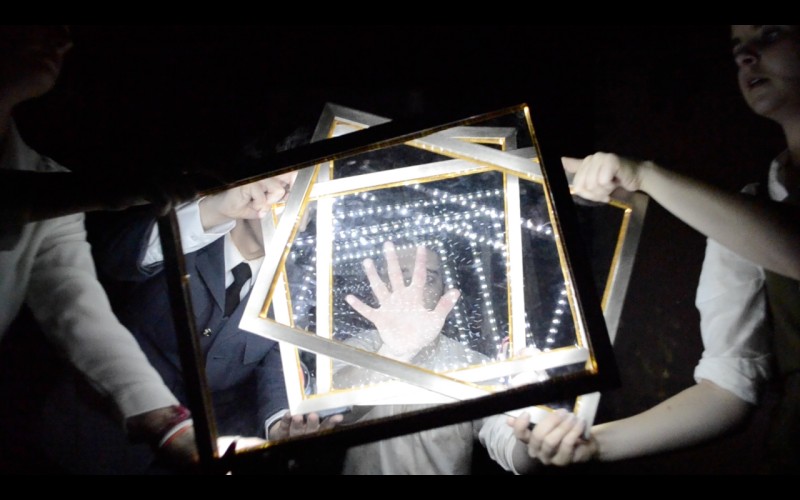 The Hive, from fledgling company Human Zoo, takes its lead from the dystopian fantasies of Huxley and Orwell. The Hive is the last subterranean bastion of human kind, the world above poisoned by war and conflict. Guided by the system controller’s desire to avoid conflict, each individual lives alone in an 8’ x 8’ ‘cell’, only connected to each other by computer terminals. Central to the performance is the gradual ‘liberation’ of one citizen from his ‘freedom in segregation’.
The Hive, from fledgling company Human Zoo, takes its lead from the dystopian fantasies of Huxley and Orwell. The Hive is the last subterranean bastion of human kind, the world above poisoned by war and conflict. Guided by the system controller’s desire to avoid conflict, each individual lives alone in an 8’ x 8’ ‘cell’, only connected to each other by computer terminals. Central to the performance is the gradual ‘liberation’ of one citizen from his ‘freedom in segregation’.
Dystopias are rich settings in which to explore notions of individual freedom and collective responsibility, and Human Zoo make a good attempt to explore some meaty issues, though at this stage of the work’s development there are still a number of issues to iron out, not least of clarifying the purpose behind what is in essence a technological and sociological morality tale.
The strongest parts of The Hive are the scenography and lighting, particularly the small illuminated, wooden frames that serve as computer screens, and the movement sequences, which are underpinned by a youthful, if slightly unfocused, energy. There is also a lovely child puppet that manages to encapsulate the ephemerality of the future hopes tied up in our children and our dreams. In contrast the other puppet objects are less developed, and technically the puppetry needs a much firmer external eye to shape the life of the objects.
The script, by artistic director Florence O’Mahony and performer Nick Gilbert, is a rare and bold attempt at blending verse and prose, managing at times to provide an underlying rhythm to the drama without being too intrusive. At other points though it is rather clunky, and not helped by the more illustrative movement sequences. There are also a few unresolved plotting issues that undermine the logic of the world, particularly towards the climax of the piece.
Performer Fleur Rooth, as an increasingly conflicted agent of the state, does a good job in finding a much needed pathos, serving as the most immediate way into the tensions of the dramatic world; whilst Matthew J Morgan’s detailed physical work helps him find a greater trajectory than the writing allows.
The Hive proves to be an ambitious attempt to meld a range of techniques and styles, and whilst technically the fusion has some potential at this stage it is in need of a tighter and more robust directorial and dramaturgical eye.
As a side note, Human Zoo represent an increasing trend of companies emerging from non-HE/tertiary training contexts, in this case the cast of The Hive come from training with the National Youth Theatre and/or London-based repertory-training company Fourth Monkey Theatre. In the face of significant HE fees this is possibly going to become a more common route for ambitious and proactive young artists. Whether this will grow into a successful alternative to more established avenues into the profession remains to be seen, but it could prove an interesting addition to the training-mix in the UK.
